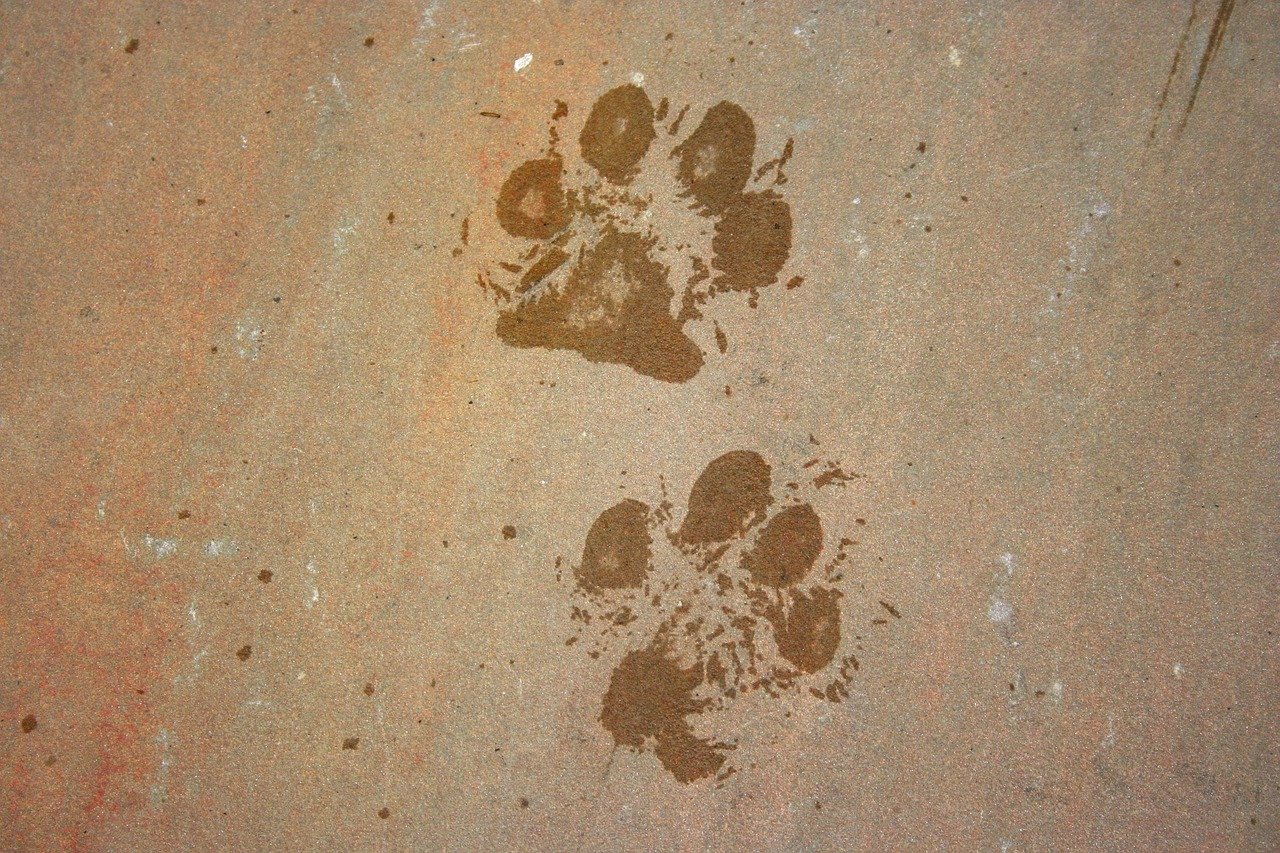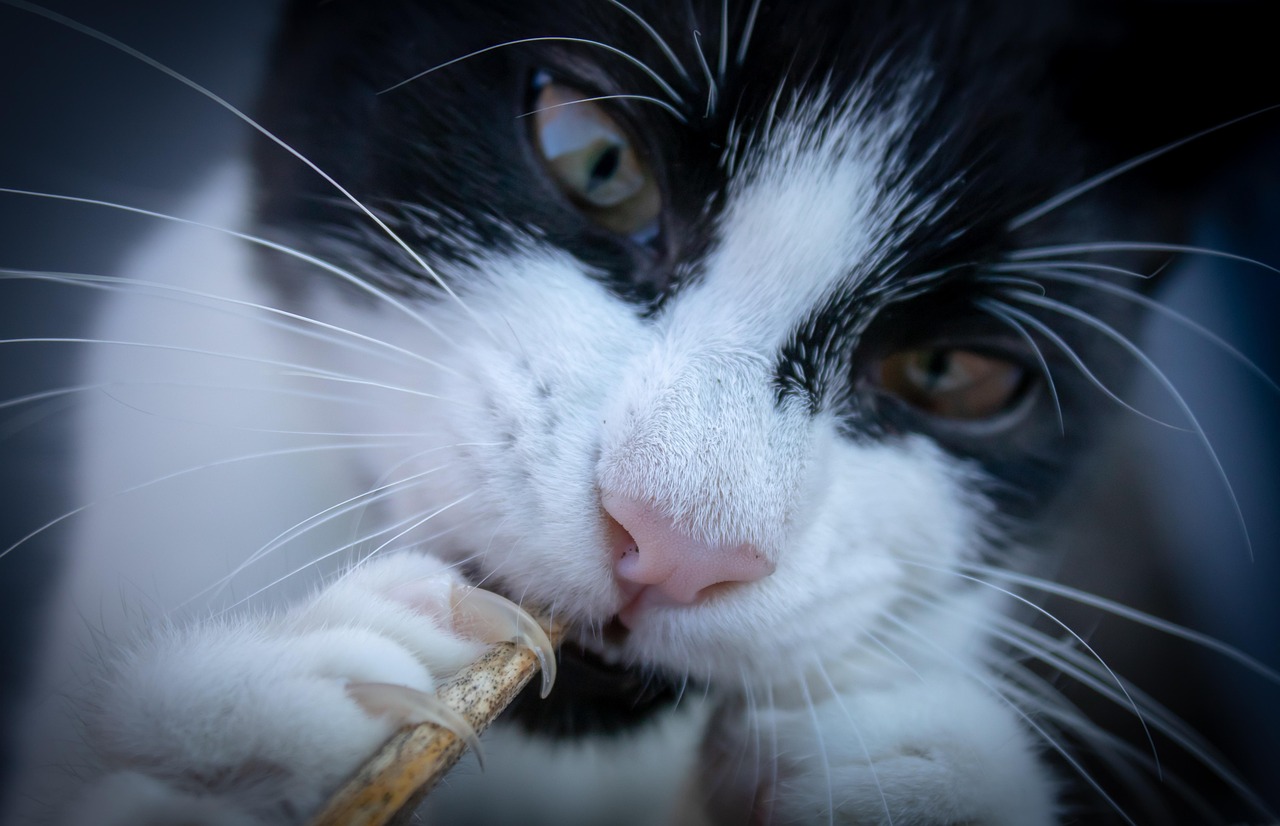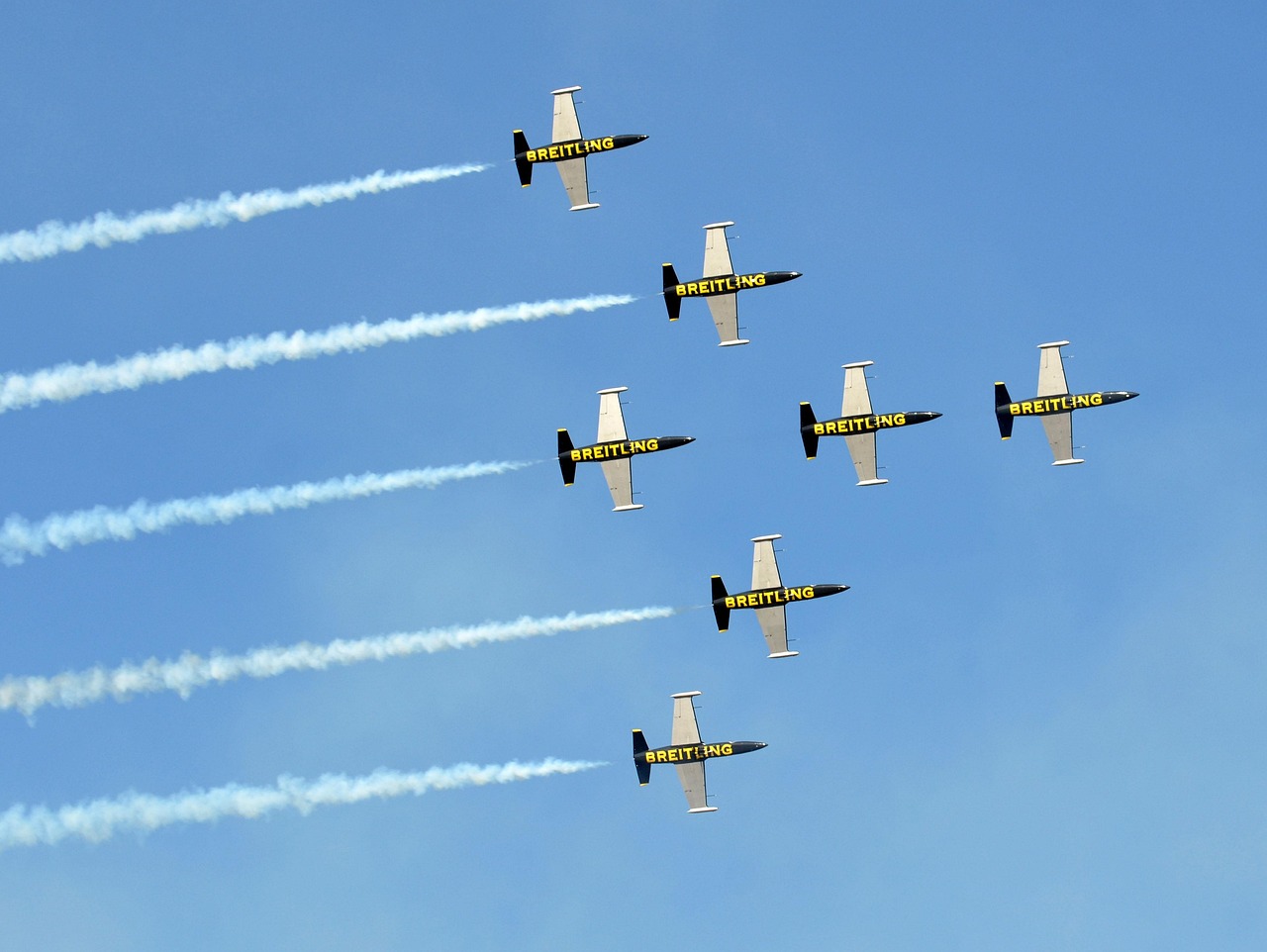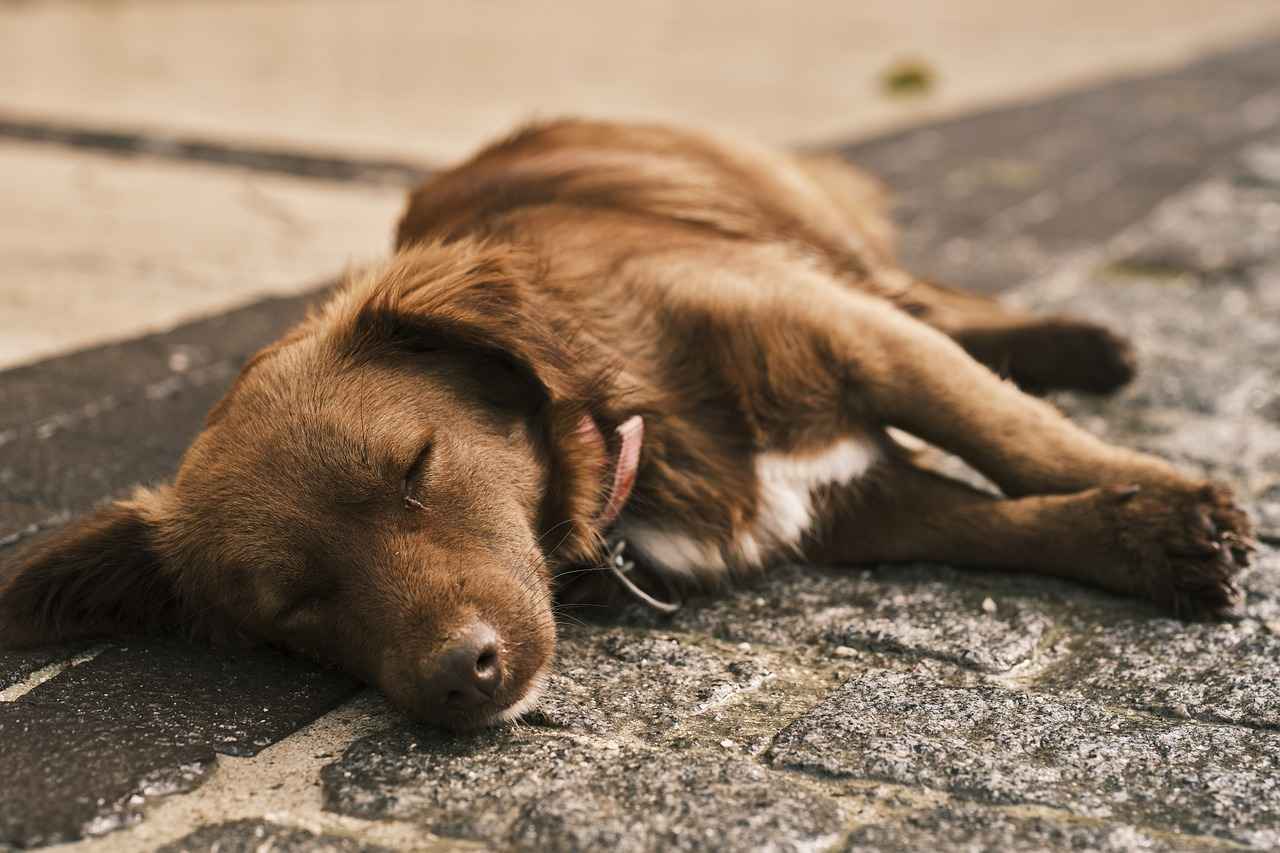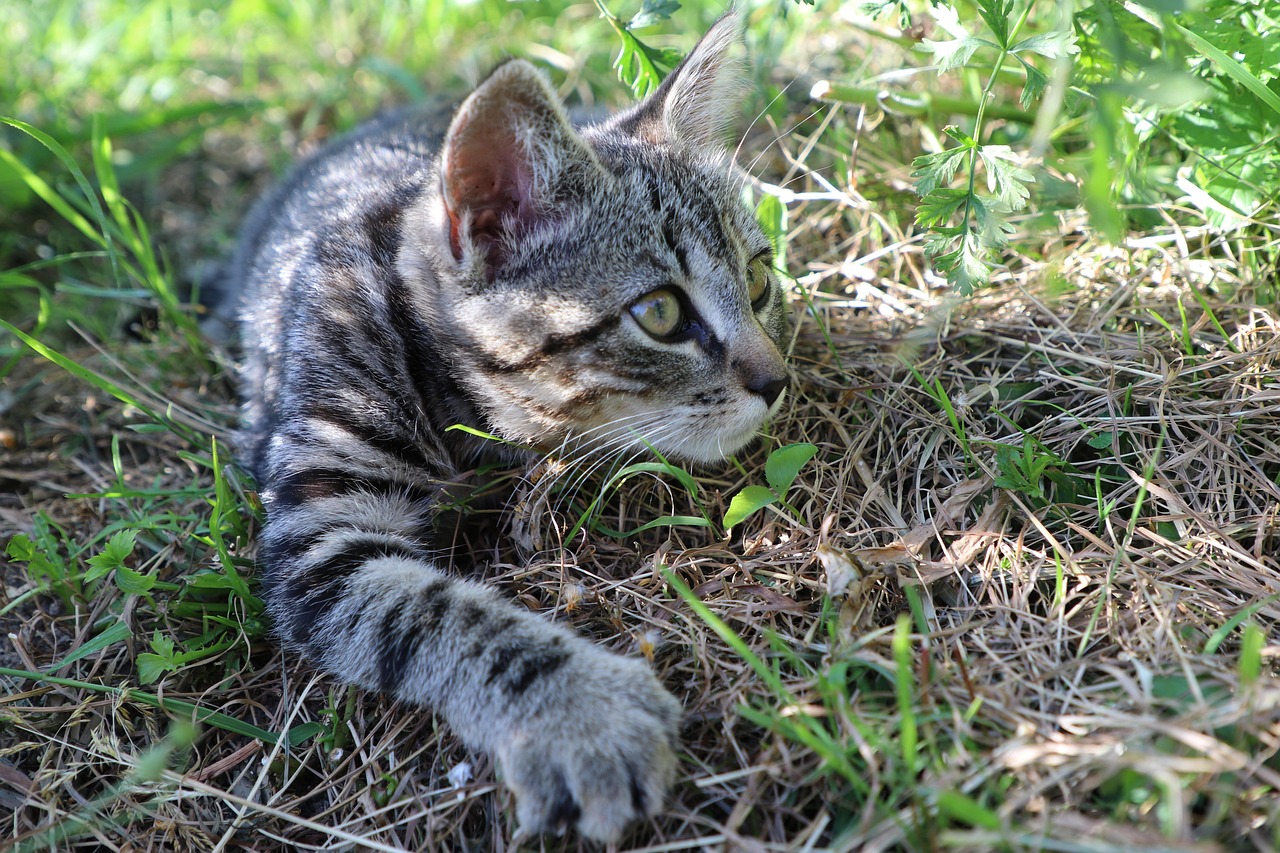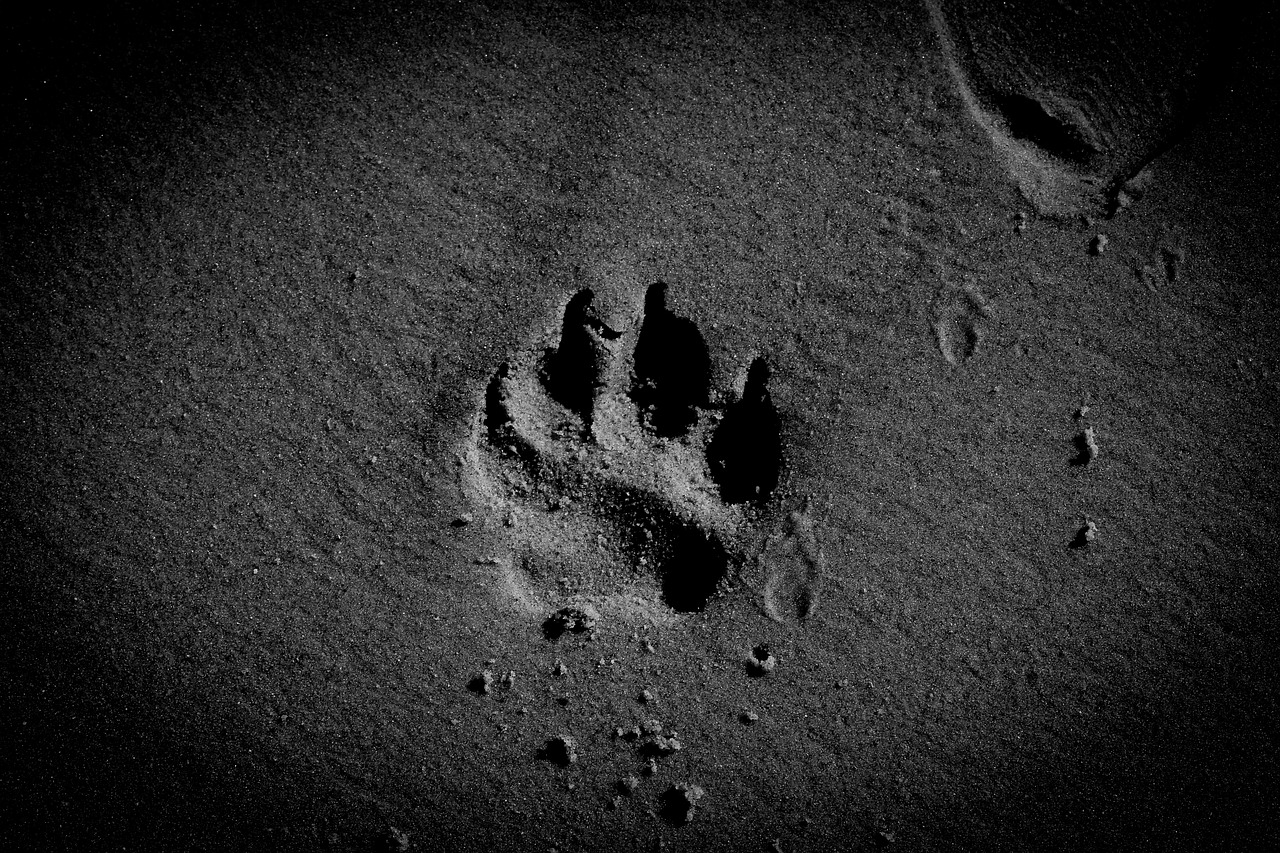Inside Paw Patrol Headquarters serves as the heart of Adventure Bay, where the heroic pups gather to prepare for their daring missions. This article delves into the intricacies of the headquarters, exploring how the team gears up for challenges, the cutting-edge technology they employ, and the invaluable lessons they learn from their escapades.
What Is Paw Patrol Headquarters?
Paw Patrol Headquarters is not just a building; it is a dynamic command center that supports the pups in their quest to protect their community. Here, they gather to strategize, train, and equip themselves with the necessary tools to tackle any emergency that arises.
Key Features of the Headquarters
- Mission Control Center: The nerve center of operations, where Ryder oversees mission coordination. It is equipped with multiple screens and communication devices that provide real-time updates, ensuring that every pup is informed and ready.
- Communication Technology: The advanced communication systems are crucial for maintaining contact among team members during missions. This ensures that everyone receives timely updates and instructions, enhancing overall efficiency.
- Mission Planning Board: This board displays the latest challenges facing Adventure Bay, allowing the pups to prioritize their missions based on urgency and importance.
Training Facilities
The training facilities within the headquarters are vital for the pups’ development. Regular training sessions help them refine their skills and prepare for a variety of rescue scenarios, ensuring they are always mission-ready.
How the Team Prepares for Missions
Preparation is the cornerstone of the Paw Patrol’s effectiveness. The team engages in several key activities to ensure they are always ready to respond to emergencies.
- Team Meetings: Regular meetings promote communication and collaboration. During these sessions, the pups discuss upcoming missions and share insights to enhance their strategies.
- Equipment Checks: Conducting thorough equipment checks is essential. This practice ensures that all tools and vehicles are in optimal condition, minimizing the risk of malfunction during critical operations.
Technology Used in Paw Patrol Headquarters
The headquarters is equipped with state-of-the-art technology that enhances the team’s operational efficiency.
- Rescue Vehicles: Each pup has a specialized vehicle tailored to their unique skills. These vehicles are essential for navigating different terrains and executing rescue operations effectively.
- Drones and Surveillance Tools: Drones provide aerial views and insights during missions. This technology aids in assessing situations from above, allowing the team to engage strategically on the ground.
The Role of Ryder in Headquarters
Ryder, the leader of Paw Patrol, plays a crucial role in mission coordination and team guidance. His leadership ensures smooth operations and fosters a sense of unity among the pups.
- Leadership Skills: Ryder’s ability to motivate and inspire the team is fundamental to maintaining morale and focus. He encourages each pup to share their ideas, fostering a collaborative environment.
- Decision-Making Process: Ryder evaluates each mission’s requirements and assigns roles accordingly. His quick decision-making skills are invaluable during emergencies, ensuring timely responses.
Lessons Learned from Paw Patrol Adventures
Each adventure offers the pups valuable lessons about teamwork, problem-solving, and community service. These experiences resonate with viewers, encouraging positive behavior and civic responsibility.
- Importance of Teamwork: The pups exemplify how teamwork can overcome challenges. Their collaborative efforts demonstrate that working together leads to successful outcomes.
- Problem-Solving Skills: The team frequently faces unexpected challenges that require quick thinking. These situations teach viewers about adaptability and the importance of creative problem-solving.
In summary, Paw Patrol Headquarters is a well-equipped and strategically designed center that prepares the team for their heroic missions. Through advanced technology, effective communication, and strong leadership, the pups learn essential life lessons while serving their community.

What Is Paw Patrol Headquarters?
Paw Patrol Headquarters is the beating heart of the beloved animated series, serving as the central hub for the adventurous pups. This facility is not just a building; it is a vibrant space where teamwork, creativity, and innovation come together to address the needs of the community. The headquarters is where the pups gather, strategize, and prepare for their heroic missions, embodying the spirit of teamwork and friendship that defines the Paw Patrol.
The headquarters is strategically located in the picturesque Adventure Bay, making it easily accessible for the pups. Inside, the headquarters is designed with several key features that enhance the efficiency and effectiveness of the team. The Mission Control Center stands out as the nerve center of operations. Here, Ryder, the team leader, coordinates all activities, ensuring that every pup knows their role and the current mission objectives. With multiple screens displaying real-time information and maps, the Mission Control Center keeps everyone informed and ready to act.
Another crucial feature of the headquarters is the Mission Planning Board. This board serves as a visual aid for the pups, displaying ongoing challenges and upcoming missions. By prioritizing tasks based on urgency, the pups can focus their efforts where they are most needed. This organized approach not only enhances their efficiency but also fosters a sense of responsibility among the team members.
The Paw Patrol Headquarters is also equipped with state-of-the-art communication technology. This advanced system ensures that all team members remain connected, allowing for seamless communication during missions. The pups can receive updates and instructions promptly, which is vital for the success of their operations.
Additionally, the headquarters features comprehensive training facilities. Regular training sessions are essential for the pups to refine their skills and prepare for a variety of rescue scenarios. These facilities are designed to simulate real-life challenges, allowing the pups to practice their responses and learn from each experience. This commitment to training underscores the importance of preparation in their line of work.
As the pups gear up for missions, they engage in various activities to ensure they are always ready to respond to emergencies. Regular team meetings are held to discuss upcoming missions and share insights. These meetings foster communication and collaboration, allowing each pup to contribute their ideas and strategies.
Moreover, conducting equipment checks is a standard practice at the headquarters. Ensuring that all tools and vehicles are in optimal condition minimizes the risk of malfunction during critical missions. This proactive approach is a testament to the team’s dedication to safety and effectiveness.
In summary, Paw Patrol Headquarters is more than just a base of operations; it is a dynamic environment where teamwork, preparation, and technology converge. The pups are not only equipped with the tools they need to succeed but also with the skills and knowledge that come from continuous training and collaboration. This ensures that they are always ready to face any challenge that comes their way, making them true heroes in Adventure Bay.
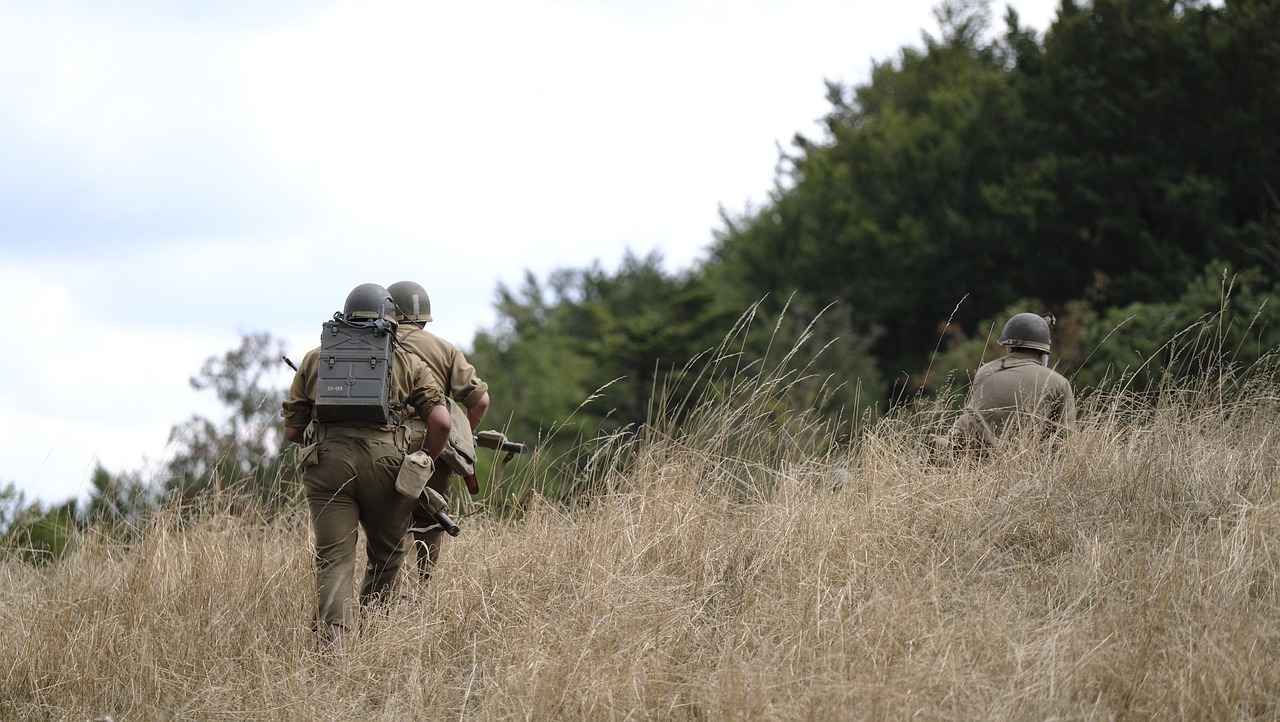
Key Features of the Headquarters
Paw Patrol Headquarters is a remarkable facility that serves as the operational heart of the team’s rescue efforts. It is designed not only to accommodate the adventurous pups but also to enhance their capabilities through advanced technology and essential tools. Each feature within this headquarters is meticulously crafted to ensure that the pups are always prepared for their heroic missions.
Advanced Technology for Enhanced Operations
The headquarters is outfitted with cutting-edge technology that streamlines the pups’ operations. This includes an array of high-tech communication devices that enable instant connectivity among team members. Whether they are in the field or at the headquarters, the pups can share vital information quickly, ensuring that everyone is on the same page during a mission.
Mission Control Center
At the core of the headquarters lies the Mission Control Center, which acts as the command center for all operations. Here, Ryder utilizes large screens and sophisticated software to monitor ongoing situations. This center is essential for real-time updates, allowing the team to adapt their strategies as new information comes in.
Strategic Planning Tools
Another key feature is the Mission Planning Board. This dynamic board displays the current challenges facing Adventure Bay, helping the pups prioritize their missions based on urgency. By visualizing their tasks, the team can strategize effectively and ensure that they address the most pressing issues first.
Training Facilities for Skill Development
Equally important are the training facilities within the headquarters. These areas are specifically designed for the pups to practice their skills regularly. Through engaging training sessions, the pups refine their abilities and learn how to handle various rescue scenarios, ensuring they are always ready to respond when duty calls.
Team Collaboration and Communication
Preparation is crucial for the Paw Patrol, and this is achieved through regular team meetings. During these sessions, the pups discuss upcoming missions and share insights on how to improve their strategies. This collaborative environment fosters a sense of unity and ensures that every member feels valued and heard.
Equipment Checks for Reliability
Conducting equipment checks is another vital practice. The team ensures that all tools and vehicles are in optimal condition before heading out on a mission. This meticulous attention to detail minimizes the risk of malfunctions during critical operations and enhances the overall effectiveness of their rescue efforts.
Innovative Rescue Vehicles
Each pup is equipped with a specialized vehicle tailored to their unique skills, which are housed in the headquarters. These rescue vehicles are essential for navigating diverse terrains and executing complex rescue operations efficiently. The design of each vehicle reflects the specific abilities of its driver, making them invaluable assets during missions.
Drones and Surveillance Technology
To further enhance their operations, the headquarters utilizes drones and surveillance tools. These devices provide aerial views and critical insights during missions, allowing the team to assess situations from above before engaging on the ground. This technology not only aids in planning but also ensures the safety of the pups as they embark on their missions.
In summary, the Paw Patrol Headquarters is a hub of advanced technology and essential tools that empower the team to perform their rescue missions effectively. From the Mission Control Center to the training facilities, every feature is designed to enhance teamwork, communication, and preparation, ensuring that the pups are always ready to help those in need.
Mission Control Center
The is an essential component of the Paw Patrol Headquarters, serving as the operational hub where Ryder and the team coordinate their rescue missions. This high-tech center is equipped with a variety of advanced tools and systems that facilitate seamless communication and real-time updates, ensuring that the pups are always prepared to respond to emergencies in Adventure Bay.
At the heart of the are large, interactive screens that display vital information about ongoing missions. These screens provide a visual representation of the current situation, allowing Ryder to assess challenges and strategize effectively. The ability to visualize data helps the team make informed decisions quickly, which is crucial during urgent rescue operations.
Moreover, the center is outfitted with state-of-the-art communication technology. This includes secure channels for voice communication, instant messaging systems, and even video conferencing capabilities. These tools enable the pups to stay connected, ensuring that everyone is on the same page. The importance of real-time updates cannot be overstated; they allow Ryder to relay crucial information to the team as situations evolve, ensuring that each pup knows their role and responsibilities.
In addition to communication tools, the features a Mission Planning Board. This board is a dynamic display that outlines the various challenges faced by the community. It helps the team prioritize their missions based on urgency and importance. By reviewing the board, the pups can quickly identify which missions require immediate attention and which can be scheduled for later. This organized approach to mission planning is key to the effectiveness of the Paw Patrol.
The also plays a vital role in training and preparation. Ryder often uses this space to conduct briefings and training sessions, ensuring that the pups are well-prepared for any situation they might encounter. Regular drills and simulations conducted in the center help the team hone their skills and improve their response times during actual missions.
To further enhance their operational efficiency, the center employs various surveillance tools and drones. These devices provide aerial views of Adventure Bay, allowing the team to assess situations from above before deploying on the ground. This technology is particularly useful for scouting difficult-to-reach areas or monitoring large crowds during community events. The integration of drones into their operations exemplifies how the Paw Patrol embraces modern technology to improve their rescue capabilities.
In summary, the is more than just a hub for communication; it is a comprehensive command center that integrates technology, strategy, and teamwork. By utilizing advanced tools and fostering a collaborative environment, Ryder and the pups are able to respond effectively to the needs of Adventure Bay. The center symbolizes the heart of the Paw Patrol, where planning, preparation, and execution come together to ensure the safety and well-being of their community.
Communication Technology
In the fast-paced world of Paw Patrol, effective communication is not just a luxury; it’s a necessity. The advanced communication technology utilized at Paw Patrol Headquarters ensures that every pup remains connected, allowing the team to operate seamlessly during missions. This technology encompasses a variety of tools and systems designed to keep the lines of communication open, ensuring that all team members receive crucial updates and instructions in a timely manner.
The backbone of this communication system is the Mission Control Center, where Ryder and the pups collaborate. Equipped with state-of-the-art screens and communication devices, this center allows for real-time updates. When an emergency arises, Ryder can instantly relay information about the situation, ensuring that each pup knows their role and responsibilities. The Mission Control Center acts as the nerve center, facilitating quick decision-making and coordination.
Moreover, the communication technology includes specialized headsets and walkie-talkies that enable the pups to communicate with each other while on the field. These devices are designed to work in various environments, ensuring that even in the most challenging terrains, the pups can stay connected. For instance, when Chase is on a mission to track down a lost pet, he can easily communicate with Skye for aerial support, enhancing the effectiveness of their operation.
In addition to voice communication, the headquarters employs visual communication tools such as video conferencing systems. This technology allows the team to review past missions and analyze their performance, leading to improved strategies for future rescues. By discussing what worked and what didn’t, the pups can refine their approach, making them more effective in their roles.
Furthermore, the integration of mobile applications into their communication strategy has revolutionized how the team operates. These apps provide instant alerts and updates regarding ongoing missions and local emergencies. For example, if a storm is approaching Adventure Bay, the pups receive immediate notifications, allowing them to prepare and mobilize quickly. This proactive approach not only enhances their readiness but also ensures that they can respond to emergencies before they escalate.
The use of drones and surveillance tools further complements the communication technology at the headquarters. These devices provide aerial views of situations, allowing the pups to assess challenges from above. With real-time footage, Ryder can make informed decisions and relay critical information to the team, ensuring that everyone is on the same page.
Ultimately, the advanced communication systems at Paw Patrol Headquarters exemplify the importance of staying connected in high-stakes situations. By utilizing a combination of voice communication, visual tools, and mobile technology, the pups are always ready to respond to any challenge that comes their way. This emphasis on communication not only strengthens their teamwork but also enhances their ability to serve the community effectively.
In conclusion, the communication technology employed by the Paw Patrol is a vital component of their success. It ensures that all team members are informed and coordinated, allowing them to tackle challenges head-on. The effectiveness of their communication systems not only aids in mission execution but also serves as a valuable lesson in the importance of teamwork and collaboration.
Mission Planning Board
The is an essential component of the Paw Patrol Headquarters, playing a crucial role in the team’s operational success. This board is not just a display; it serves as a dynamic tool that helps the pups tackle the various challenges faced by the community of Adventure Bay.
At the heart of the Mission Planning Board is its ability to visualize current challenges. It showcases a range of situations that require immediate attention, from rescuing stranded animals to addressing environmental concerns. By presenting these challenges visually, the board allows the pups to quickly assess what needs to be prioritized, ensuring that no mission is overlooked.
One of the key features of the Mission Planning Board is its strategic layout. The board is divided into sections that categorize missions based on urgency and importance. This categorization helps the team to focus on what needs to be done first, optimizing their response time. For example, a mission involving a lost puppy would be marked as high urgency, while a community clean-up might be categorized as important but less urgent. This clear distinction aids in effective time management and resource allocation.
| Mission Type | Urgency Level | Action Required |
|---|---|---|
| Lost Puppy Rescue | High | Immediate Deployment |
| Community Clean-Up | Medium | Schedule for Next Week |
| Tree Trimming | Low | Plan for Later |
In addition to prioritization, the Mission Planning Board also facilitates team collaboration. During team meetings, the pups gather around the board to discuss each mission in detail. This collaborative approach encourages input from all members, allowing them to share their unique insights and skills. Ryder, the leader, often emphasizes the importance of teamwork during these discussions, reinforcing that every pup’s contribution is valuable.
The board also serves as a learning tool. After each mission, the pups review their performance and discuss what went well and what could be improved. This reflective practice helps them to adapt and refine their strategies for future missions, making them more effective each time. The lessons learned from past experiences are crucial in shaping their approach to new challenges, ensuring that they are always prepared.
Moreover, the Mission Planning Board is equipped with real-time updates. As new situations arise in Adventure Bay, the board is updated instantly, allowing the pups to stay informed about the latest developments. This feature is particularly important during emergencies, where time is of the essence. The ability to react promptly to changing circumstances can make all the difference in the outcome of a mission.
In conclusion, the Mission Planning Board is a vital tool that enhances the operational efficiency of the Paw Patrol team. By displaying current challenges, prioritizing missions, fostering collaboration, and providing real-time updates, it ensures that the pups are always ready to respond to the needs of Adventure Bay. This board not only aids in mission planning but also embodies the spirit of teamwork and community service that the Paw Patrol stands for.
Training Facilities
Within the vibrant and dynamic environment of Paw Patrol Headquarters, play an essential role in the development of the pups’ skills. These facilities are not just a place for practice; they are a comprehensive training ground designed to prepare the team for the diverse challenges they face in their rescue missions.
The training facilities are equipped with state-of-the-art equipment and resources that allow the pups to hone their abilities. Regular training sessions are organized to ensure that each pup can improve their skills and adapt to various rescue scenarios. Here are some key aspects of the training facilities:
- Obstacle Courses: The headquarters features intricate obstacle courses that simulate real-life rescue situations. These courses help the pups develop agility, speed, and problem-solving skills as they navigate through various challenges.
- Skill Workshops: Specialized workshops focus on different skills such as teamwork, communication, and technical abilities. These workshops are led by experienced trainers who provide valuable insights and techniques to enhance the pups’ performance.
- Scenario-Based Training: The pups engage in scenario-based training exercises that mimic actual emergencies. This practical approach allows them to apply their skills in a controlled environment, fostering confidence and readiness for real missions.
- Feedback and Evaluation: After each training session, the pups receive constructive feedback from their peers and trainers. This evaluation process is crucial for identifying areas for improvement and refining their techniques.
Moreover, the training facilities promote a culture of continuous learning. The pups are encouraged to share their experiences and learn from one another, which strengthens their bond and enhances teamwork. This collaborative atmosphere is vital for their growth, as it allows them to develop not only as individuals but also as a cohesive unit.
The importance of these training facilities cannot be overstated. Each session equips the pups with the necessary skills to respond effectively to emergencies, ensuring that they are always prepared to assist the community. The rigorous training regimen instills discipline and resilience, which are essential traits for any rescue team.
In addition to physical training, the facilities also emphasize mental preparedness. The pups participate in exercises that challenge their critical thinking and decision-making skills. This holistic approach to training ensures that they are not only physically fit but also mentally sharp when facing unexpected situations.
As the Paw Patrol continues to tackle new challenges, the role of the training facilities remains pivotal. By fostering a strong foundation of skills and teamwork, the headquarters ensures that the pups are always ready to leap into action. Their commitment to training exemplifies the dedication and passion that defines the Paw Patrol, making them a beloved team in Adventure Bay.

How the Team Prepares for Missions
Preparation is essential for the success of the Paw Patrol team, ensuring they are always ready to respond to emergencies. The pups engage in a variety of activities that enhance their skills, foster teamwork, and keep their equipment in top shape. This article delves into the comprehensive methods the Paw Patrol employs to prepare for their missions, highlighting the importance of teamwork and effective communication.
Regular team meetings are a cornerstone of the Paw Patrol’s preparation process. During these gatherings, Ryder and the pups discuss upcoming missions, share insights, and brainstorm strategies. This collaborative environment allows each pup to contribute their unique perspectives, ensuring that every mission is approached with a well-rounded strategy.
Another critical aspect of preparation is conducting equipment checks. Each pup is responsible for ensuring that their tools and vehicles are in optimal condition. This practice minimizes the risk of equipment failure during critical missions. By regularly inspecting their gear, the team can address any issues proactively, ensuring they are always ready for action.
Training sessions play a vital role in the pups’ ongoing development. These sessions are designed to enhance their individual skills and improve their ability to work as a cohesive unit. Whether it’s practicing rescue techniques or participating in obstacle courses, these activities prepare the pups for the diverse challenges they may face in the field.
The Paw Patrol headquarters is equipped with state-of-the-art technology that significantly enhances the team’s operational efficiency. Tools such as drones and surveillance cameras allow the pups to gather crucial information before engaging in a mission. This technological edge enables them to assess situations accurately and devise effective strategies.
The Mission Planning Board is another essential feature of the headquarters. It displays current challenges faced by Adventure Bay, helping the pups prioritize their missions based on urgency. By visualizing their tasks, the team can focus their efforts where they are needed most, ensuring that no emergency goes unaddressed.
As the leader of the Paw Patrol, Ryder plays a crucial role in mission preparation. His leadership skills are essential for maintaining team morale and ensuring that everyone is focused on their objectives. Ryder’s ability to make quick decisions during emergencies is vital, as it allows the team to respond swiftly and effectively to any situation.
Each preparation session teaches valuable lessons about teamwork and problem-solving. The pups learn to rely on each other’s strengths and recognize the importance of adaptability. These experiences not only contribute to their success in missions but also resonate with viewers, encouraging positive behaviors such as collaboration and resilience.
In summary, the Paw Patrol’s commitment to preparation is a key factor in their success. Through regular team meetings, equipment checks, training sessions, and the use of advanced technology, the team ensures they are always ready to tackle any challenge that comes their way. Their dedication to preparation serves as an inspiring example of how teamwork and effective communication can lead to successful outcomes.
Team Meetings
In the dynamic world of Paw Patrol, effective communication and collaboration are essential for the team’s success. One of the most critical components of their operational strategy is regular team meetings. These meetings serve as a platform for the pups to gather, share information, and strategize for their upcoming missions.
The primary aim of these meetings is to foster a sense of unity among the pups. During these discussions, they review previous missions, analyze what worked well, and identify areas for improvement. This reflective practice allows the team to learn from their experiences and continuously enhance their performance.
As new challenges arise in Adventure Bay, the pups utilize their meetings to discuss upcoming missions. Each pup brings their unique perspective, contributing ideas on how to tackle specific situations. This collaborative approach not only enriches the planning process but also empowers each member to take ownership of their roles.
- Insights from Past Experiences: The pups share valuable lessons learned from previous missions, which helps the team avoid similar pitfalls in the future.
- Innovative Strategies: By brainstorming together, they can devise innovative strategies tailored to the specific challenges they face, ensuring they are well-prepared for any scenario.
- Role Assignments: Meetings also facilitate discussions about roles and responsibilities, allowing Ryder to assign tasks based on each pup’s strengths and expertise.
Regular team meetings are not just about mission planning; they also play a significant role in building team cohesion. By coming together to discuss their goals and challenges, the pups strengthen their bond and trust in one another. This camaraderie is vital, especially in high-pressure situations where teamwork can make all the difference.
Another key aspect of these meetings is the emphasis on open communication. Ryder encourages all pups to voice their opinions and suggestions, fostering an environment where everyone feels valued. This inclusivity not only boosts morale but also leads to more comprehensive and effective solutions.
The Paw Patrol Headquarters is equipped with advanced technology that enhances the effectiveness of their meetings. Tools such as interactive displays and communication devices allow for real-time updates and visual aids during discussions. This technological integration ensures that all team members are on the same page, making the planning process smoother and more efficient.
Team meetings are held regularly, often scheduled around the pups’ training sessions and mission timelines. This structured approach ensures that the team remains focused and prepared for any challenges that may arise. Each meeting typically follows a consistent format, starting with a review of past missions, followed by discussions on upcoming tasks, and concluding with a brainstorming session for future strategies.
In summary, the regular team meetings at Paw Patrol Headquarters are a cornerstone of their operational success. By fostering communication, encouraging collaboration, and utilizing technology, the pups ensure they are always ready to tackle whatever challenges come their way. This systematic approach not only enhances their effectiveness in the field but also strengthens their bond as a team, making them a formidable force for good in Adventure Bay.
Equipment Checks
are a critical component of the Paw Patrol’s operational readiness. These checks ensure that all tools and vehicles are in optimal condition, which is essential for the team’s success in various rescue missions. By regularly inspecting their equipment, the pups can minimize the risk of malfunction during critical situations, allowing them to respond swiftly and effectively to emergencies.
The importance of conducting thorough equipment checks cannot be overstated. Each pup relies on their specialized vehicles and tools to perform their unique tasks. For instance, Chase uses his police cruiser to chase down villains, while Marshall utilizes his fire truck to extinguish flames and rescue those in danger. If any of these vehicles were to malfunction, it could compromise the mission and put lives at risk.
To illustrate the process, the team follows a systematic approach during their equipment checks:
- Visual Inspection: Each vehicle and tool is visually inspected for any signs of wear or damage. This includes checking for leaks, cracks, or any irregularities that could hinder performance.
- Functionality Tests: The pups conduct functionality tests to ensure that all systems are operational. This may involve running the vehicles and testing equipment like ladders, hoses, and communication devices.
- Maintenance Protocols: Regular maintenance routines are established for each piece of equipment. This can include oil changes for vehicles, battery checks, and cleaning tools to ensure they are ready for action.
- Documentation: Keeping a log of all inspections and maintenance performed is crucial. This documentation helps track the condition of each tool and vehicle over time, ensuring that any issues are addressed promptly.
In addition to the practical benefits, equipment checks also foster a culture of responsibility and teamwork among the pups. They learn to depend on each other and understand the importance of being prepared. This teamwork is vital, as each pup brings their unique skills to the table, and their effectiveness relies on the collective readiness of the entire team.
Moreover, conducting equipment checks instills a sense of confidence in the pups. Knowing that their tools and vehicles are in top condition allows them to focus on the mission at hand, rather than worrying about potential equipment failures. This psychological aspect is just as important as the physical readiness of their gear.
Ultimately, the practice of performing regular equipment checks is a key element of the Paw Patrol’s success. It not only enhances operational efficiency but also reinforces the values of teamwork, responsibility, and preparedness. By ensuring that all tools and vehicles are ready for action, the team can tackle any challenge that comes their way, embodying the spirit of adventure and community service that defines the Paw Patrol.

Technology Used in Paw Patrol Headquarters
In the world of Paw Patrol, technology plays a vital role in ensuring that the team is always prepared for any challenge that comes their way. The headquarters is equipped with state-of-the-art technology that enhances the efficiency and effectiveness of the team’s operations. This article delves deeper into the various technologies utilized within the headquarters, illustrating how they empower the pups in their rescue missions.
Effective communication is crucial for the success of any mission. At Paw Patrol Headquarters, advanced communication systems allow the pups to stay connected at all times. These systems include:
- Real-Time Messaging: Instant messaging tools enable the team to share updates and coordinate their actions seamlessly.
- Video Conferencing: High-definition video calls help Ryder communicate with the pups, providing visual aids during mission briefings.
- Emergency Alerts: Automated alert systems ensure that all team members receive critical updates immediately, allowing for quick responses.
The heart of operations at Paw Patrol Headquarters is the Mission Control Center. This high-tech space features:
- Interactive Touch Screens: These screens display maps, mission details, and live updates from the field, helping Ryder make informed decisions.
- Data Analytics Tools: Advanced software analyzes past missions to identify patterns and improve future strategies.
- Resource Management: Tools that track the availability and condition of vehicles and equipment ensure that everything is mission-ready.
Each pup has a unique vehicle designed to maximize their individual skills. These specialized rescue vehicles are equipped with cutting-edge technology, including:
- Terrain Adaptability: Vehicles are engineered to navigate various landscapes, from rugged mountains to urban settings.
- High-Tech Gadgets: Each vehicle is fitted with tools and gadgets that assist in rescue operations, such as grappling hooks, water cannons, and more.
- GPS Tracking: Advanced GPS systems ensure that the pups can find their way to the scene of an emergency quickly and efficiently.
To enhance situational awareness during missions, Paw Patrol utilizes drones and surveillance tools. These technologies provide:
- Aerial Views: Drones can survey large areas from above, giving the team valuable insights into the situation before they engage.
- Real-Time Data: Surveillance tools collect data on environmental conditions, helping the pups prepare for any challenges they may face.
- Safety Monitoring: Drones can monitor hazardous areas, ensuring the safety of the team as they plan their approach.
Training is essential for the pups to hone their skills, and the headquarters is equipped with simulation technologies that facilitate this process. These include:
- Virtual Reality Training: VR simulations allow the pups to practice rescue scenarios in a controlled environment, enhancing their readiness.
- Skill Assessment Tools: These tools help evaluate the pups’ performance during training exercises, providing feedback for improvement.
- Team Coordination Drills: Technology-assisted drills promote teamwork, ensuring that the pups can work together effectively during real missions.
The integration of these advanced technologies into Paw Patrol Headquarters not only enhances the team’s operational capabilities but also ensures that they are always prepared to respond to emergencies in Adventure Bay. The combination of sophisticated tools, effective communication, and ongoing training allows the pups to work together seamlessly, showcasing the importance of technology in modern rescue operations.
Rescue Vehicles
In the world of Paw Patrol, each pup is more than just a cute canine; they are equipped with specialized vehicles that enhance their unique skills and abilities. These vehicles are not merely modes of transportation; they are vital tools that enable the pups to navigate various terrains and execute rescue operations effectively. Understanding the significance of these vehicles provides insight into how the Paw Patrol team operates and succeeds in their missions.
Each pup’s vehicle is specifically designed to complement their individual strengths. For instance, Chase, the police pup, drives a high-tech police cruiser equipped with advanced surveillance tools and a megaphone for crowd control. This vehicle allows him to manage traffic and ensure safety during emergencies. Similarly, Marshall, the firefighter pup, uses a fire truck that features a ladder and water hoses, enabling him to tackle fires and rescue those in distress.
The diverse landscapes of Adventure Bay pose various challenges, from rugged mountains to sandy beaches. The specialized vehicles are built to handle these different terrains, ensuring that the pups can reach those in need no matter the conditions. For example, Skye flies her helicopter, which is perfect for aerial rescues and scouting missions, while Rubble operates a bulldozer that can clear debris and create safe paths.
Each vehicle is equipped with cutting-edge technology that enhances the pups’ capabilities. Features such as GPS navigation, communication systems, and emergency lights ensure that the team can respond quickly and efficiently. The integration of technology allows the pups to stay informed about the situation on the ground, making their operations smoother and more coordinated.
Before embarking on missions, the pups undergo rigorous training to familiarize themselves with their vehicles. This training is crucial as it helps them master the controls and features of their specialized vehicles. Regular practice sessions ensure that they can operate their vehicles under pressure, further enhancing their readiness for real-life rescue scenarios.
The vehicles not only serve individual purposes but also promote teamwork. During missions, the pups often need to collaborate, utilizing their vehicles in tandem to achieve a common goal. For instance, while Zuma uses his hovercraft to rescue someone from the water, Rocky may use his recycling truck to gather materials for a makeshift bridge. This teamwork is a core principle of Paw Patrol, showcasing the importance of combining their unique skills for successful outcomes.
The specialized vehicles of Paw Patrol are more than just exciting gadgets; they serve as a platform for teaching valuable life lessons. Children learn the importance of teamwork, problem-solving, and adaptability through the adventures of the Paw Patrol team. Each mission emphasizes that, with the right tools and teamwork, obstacles can be overcome, and help can be provided to those in need.
In conclusion, the specialized vehicles of Paw Patrol are integral to the team’s success in their rescue missions. They are tailored to each pup’s unique skills, equipped with advanced technology, and designed to navigate various terrains. Through training and collaboration, the pups maximize the effectiveness of their vehicles, ensuring they are always ready to respond to any emergency. The lessons learned from their adventures resonate with viewers, promoting positive values and inspiring the next generation of heroes.
Drones and Surveillance Tools
have revolutionized the way rescue missions are conducted, providing the Paw Patrol team with critical aerial views and insights. This technology not only enhances situational awareness but also plays a pivotal role in the planning and execution of their missions.
Utilizing advanced aerial technology, the Paw Patrol can assess challenging environments from above. This capability allows the team to gather real-time data, which is essential for making informed decisions. For instance, before the pups engage on the ground, they can identify potential hazards, locate missing individuals, and evaluate the overall landscape. This pre-engagement assessment helps in formulating effective strategies tailored to the specific circumstances of each mission.
Surveillance tools, such as high-resolution cameras and thermal imaging devices, complement drone technology by providing detailed visual information. These tools enable the team to monitor situations continuously, ensuring that they are always one step ahead. The ability to capture live footage allows Ryder and the pups to analyze the situation dynamically, adjusting their approach as necessary. This adaptability is crucial when time is of the essence, as it can significantly impact the outcome of a rescue operation.
The integration of drones into the Paw Patrol’s operations also fosters teamwork and collaboration. With the aerial views provided by these tools, the pups can strategize more effectively. They can visualize the mission area collectively, discussing various approaches and assigning roles based on the insights gathered from the drone footage. This collaborative planning process not only enhances the efficiency of their missions but also strengthens their bonds as a team.
Safety is another critical aspect that drones and surveillance tools help address. By surveying the mission area from the air, the team can identify potential dangers that may not be visible from the ground. This foresight allows the pups to devise safety protocols and contingency plans, ensuring that they can respond to emergencies without putting themselves at unnecessary risk.
Moreover, the use of drones extends beyond immediate rescue missions. They are also valuable for community engagement and education. The Paw Patrol team can use aerial footage to showcase their efforts in Adventure Bay, highlighting their commitment to safety and service. This transparency helps build trust within the community, encouraging citizens to support and participate in local initiatives.
In terms of technological advancements, the Paw Patrol headquarters continually updates its drone and surveillance capabilities. As new technologies emerge, the team is quick to adopt innovations that can enhance their operations. This commitment to staying at the forefront of technology ensures that the pups are always equipped with the best tools available.
In conclusion, the integration of drones and surveillance tools into the Paw Patrol’s operations has transformed the way the team approaches missions. By providing aerial insights and enhancing situational awareness, these technologies enable the pups to respond more effectively to challenges. The collaborative planning, safety enhancements, and community engagement fostered by these tools exemplify the Paw Patrol’s dedication to serving Adventure Bay with excellence.

The Role of Ryder in Headquarters
In the heart of Paw Patrol Headquarters, Ryder stands as the central figure, embodying the essence of leadership and teamwork. His role transcends mere coordination; he is the driving force that ensures the pups are always prepared to tackle any challenge that comes their way. With a blend of strategic planning and unwavering support, Ryder cultivates an environment where every pup feels valued and empowered to contribute their unique skills.
Ryder’s leadership style is characterized by collaboration and encouragement. He understands that each pup brings something special to the team, and he actively promotes an atmosphere where ideas can flourish. By fostering open communication, Ryder ensures that the pups feel comfortable sharing their thoughts and suggestions. This approach not only boosts morale but also enhances the team’s overall performance.
One of Ryder’s primary responsibilities is to coordinate missions effectively. He assesses the needs of Adventure Bay and determines the best course of action. By analyzing each situation thoroughly, Ryder assigns roles based on the pups’ individual strengths. For instance, he might direct Chase to take the lead in a rescue operation that requires speed and agility, while Rocky might be tasked with providing the necessary tools for the job.
In the fast-paced world of Paw Patrol, quick decision-making is paramount. Ryder’s ability to think on his feet allows him to respond to emergencies with confidence and clarity. He utilizes the advanced technology available in the headquarters, such as the Mission Control Center, to gather real-time information. This capability enables him to make informed decisions that can save lives and ensure the safety of the community.
Ryder is also deeply invested in the training and development of each pup. He organizes regular training sessions that focus on enhancing their skills and preparing them for various scenarios. These sessions are not just about physical training; they also emphasize the importance of teamwork and communication. By simulating real-life rescue situations, Ryder helps the pups build confidence and learn to rely on one another.
In addition to traditional training, Ryder encourages the pups to be innovative. He welcomes new ideas and solutions, which has led to the development of new techniques and tools that enhance their rescue capabilities. This culture of innovation ensures that the Paw Patrol remains adaptable and prepared for any challenge that arises.
The impact of Ryder’s leadership is evident in the success of the Paw Patrol. His ability to unite the team and inspire them to work towards a common goal has resulted in countless successful missions. Each pup learns valuable lessons under his guidance, such as the importance of trust and collaboration. These lessons extend beyond the headquarters, influencing how they interact with the community and each other.
Ryder’s role in Paw Patrol Headquarters is multifaceted and essential to the team’s success. Through his leadership, he not only coordinates missions but also fosters a culture of teamwork, innovation, and continuous learning. As the pups look up to him for guidance, they are reminded that together, they can overcome any obstacle. Ryder’s commitment to the team and the community exemplifies the values of service, dedication, and bravery, making him an invaluable leader in Adventure Bay.
Leadership Skills
Paw Patrol is not just a team of adventurous pups; it is a well-oiled machine that thrives on effective leadership and collaboration. At the heart of this operation is Ryder, whose leadership skills are crucial for maintaining team morale and focus. His approach encourages each pup to contribute their unique ideas and skills, fostering a truly collaborative environment.
Ryder’s leadership style is characterized by open communication and active listening. He creates a safe space for the pups to express their thoughts, which not only boosts their confidence but also enhances their problem-solving capabilities. This approach is vital, especially during high-pressure situations where quick thinking is required. By encouraging each pup to voice their opinions, Ryder ensures that all team members feel valued, which in turn strengthens their commitment to the mission at hand.
In addition to fostering communication, Ryder emphasizes the importance of teamwork. He understands that each pup brings something unique to the table, whether it’s Chase’s keen sense of smell or Skye’s aerial agility. By recognizing and utilizing these individual strengths, Ryder helps the team function as a cohesive unit. This not only improves the efficiency of their operations but also creates a sense of camaraderie among the pups.
Ryder’s decision-making process is another area where his leadership shines. When faced with challenges, he evaluates the situation thoroughly before assigning roles based on each pup’s expertise. This methodical approach ensures that the team is not only prepared but also equipped to tackle any obstacle that comes their way. His ability to make informed decisions quickly is especially crucial during emergencies, where every second counts.
Moreover, Ryder’s leadership extends beyond just mission planning. He takes the time to mentor each pup, helping them develop their skills and grow as individuals. This mentorship fosters a culture of continuous learning within the team, where pups are encouraged to take initiative and explore new ideas. For instance, if Rubble has a new construction technique, Ryder supports him in presenting it to the group, allowing everyone to benefit from Rubble’s insights.
Ryder also leads by example. His dedication to the community and his unwavering commitment to helping others inspire the pups to embody these values. When they see Ryder putting in the effort, it motivates them to follow suit. This shared vision of community service strengthens their bond and reinforces the significance of their work.
In conclusion, Ryder’s exceptional leadership skills are foundational to the success of the Paw Patrol team. His ability to foster a collaborative environment, make quick and informed decisions, and mentor his team members ensures that they are always ready to take on any challenge. The lessons learned from his leadership not only enhance the effectiveness of their missions but also instill values of teamwork, communication, and community service in the pups. As they continue to embark on new adventures, Ryder’s guidance will undoubtedly remain a pivotal element of their success.
Decision-Making Process
The at Paw Patrol Headquarters is a critical component of the team’s success in responding to emergencies. This process involves a systematic evaluation of the mission’s needs, allowing Ryder to assign specific roles to each pup based on their unique skills and capabilities. By understanding the demands of each situation, Ryder ensures that the team operates efficiently and effectively.
When an emergency arises, the first step is to gather relevant information. Ryder quickly assesses the situation at hand, considering factors such as the nature of the emergency, the location, and the resources available. This initial assessment is crucial, as it sets the stage for the entire operation. The team must be prepared to adapt and respond swiftly, which is where Ryder’s leadership shines.
Once the situation is evaluated, Ryder conducts a brief team meeting, often referred to as a mission briefing. During this meeting, he communicates the details of the emergency to the pups, highlighting the urgency and the specific challenges they may face. This open line of communication fosters a sense of unity and purpose among the team members, ensuring everyone is on the same page.
The next phase involves role assignment. Ryder considers each pup’s strengths and weaknesses to determine who is best suited for specific tasks. For example, if the emergency involves a water rescue, he may assign Zuma, the water pup, to lead the operation, while Chase, with his police skills, may handle crowd control. This strategic allocation of roles maximizes the team’s effectiveness and minimizes the risk of errors during high-pressure situations.
Furthermore, Ryder’s ability to make quick decisions is particularly vital during emergencies. He must weigh the options rapidly, often with limited information. This requires not only a deep understanding of his team but also a strong intuition developed through experience. The pups trust Ryder’s judgment, knowing that he will steer them in the right direction, even when time is of the essence.
In addition to quick decision-making, Ryder emphasizes the importance of team collaboration. After roles are assigned, the pups are encouraged to share their thoughts and ideas on how to tackle the mission. This collaborative approach not only boosts morale but also enhances problem-solving capabilities. Each pup brings a unique perspective to the table, which can lead to innovative solutions that Ryder may not have considered alone.
Once the mission is underway, Ryder continues to monitor the situation closely. He uses advanced communication technology to stay in touch with the pups, providing real-time updates and adjustments as needed. This ongoing support is a testament to his leadership style, which prioritizes adaptability and responsiveness.
After the mission is completed, Ryder conducts a debriefing session with the team. This reflective practice allows the pups to discuss what went well and what could be improved for future missions. It reinforces the lessons learned and helps the team grow stronger together. The decision-making process is not just about the immediate response; it is also about learning and evolving as a cohesive unit.
In summary, the at Paw Patrol Headquarters is a multifaceted approach that involves careful evaluation, strategic role assignment, and continuous communication. Ryder’s leadership plays a pivotal role in ensuring that the team remains prepared for any challenge they may face. Through collaboration and adaptability, the Paw Patrol exemplifies the power of teamwork in overcoming obstacles and serving their community.
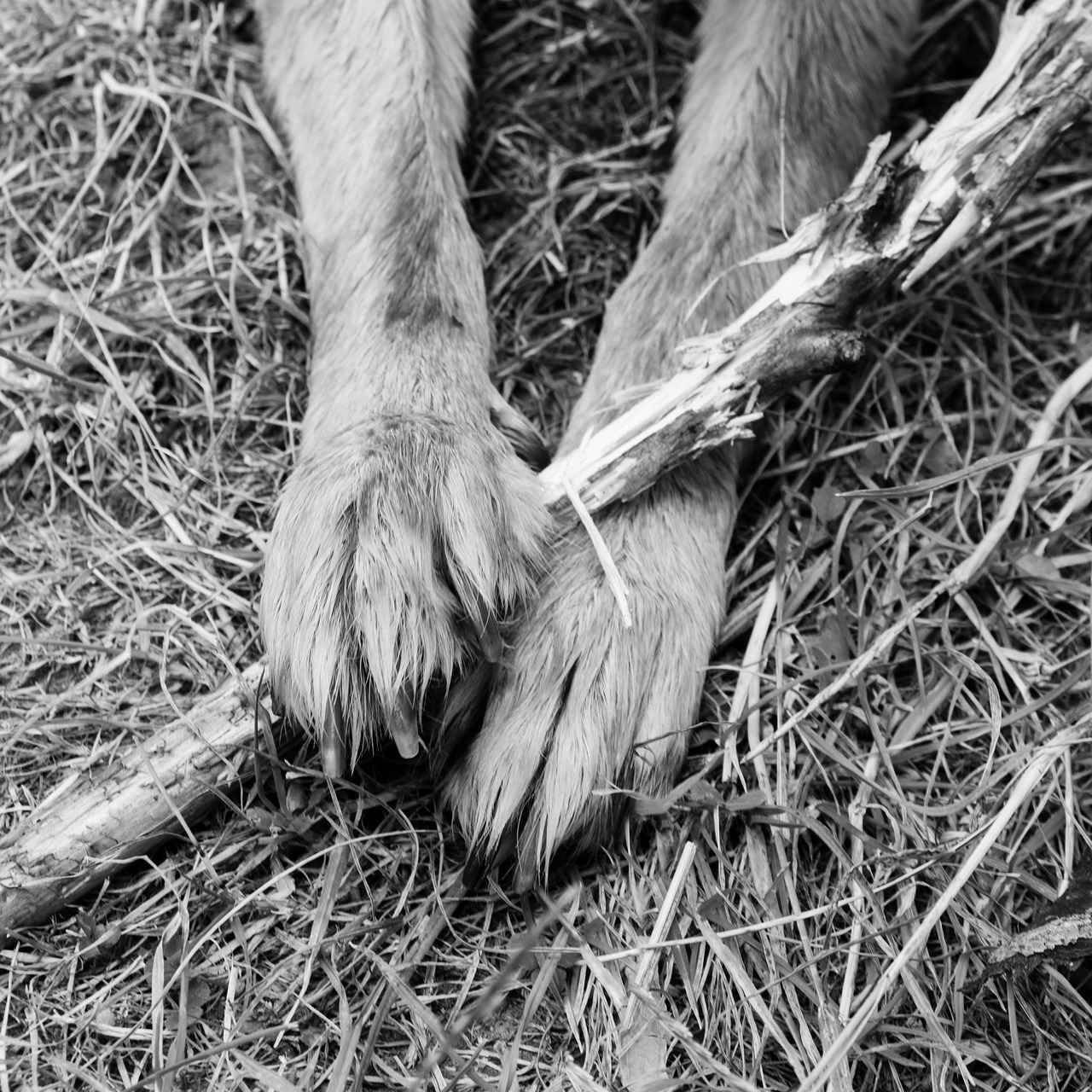
Lessons Learned from Paw Patrol Adventures
Paw Patrol, a beloved children’s series, not only entertains but also imparts essential life lessons through the adventures of its heroic pups. Each episode showcases the importance of teamwork, problem-solving, and community service, resonating deeply with young viewers. These valuable lessons encourage positive behavior and inspire children to engage in their communities.
One of the most significant lessons from Paw Patrol is the importance of teamwork. The pups, each with their unique skills, come together to tackle challenges that no single pup could solve alone. This collaboration teaches children that working together can lead to better outcomes. For instance, when the team faces a rescue mission, they must communicate effectively, share ideas, and trust each other’s abilities. This not only highlights the strength found in unity but also instills a sense of belonging and responsibility among young viewers.
Throughout their adventures, the Paw Patrol pups encounter various obstacles that require quick thinking and creative solutions. These scenarios serve as practical lessons in problem-solving. For example, when a bridge collapses, the pups must assess the situation, brainstorm potential solutions, and implement a plan to rescue those in need. This dynamic approach to problem-solving encourages children to think critically and adapt to changing circumstances in their own lives.
Paw Patrol emphasizes the value of community service through its missions to help Adventure Bay’s residents. Each adventure highlights the pups’ commitment to serving their community, whether it’s rescuing a stranded kitten or helping to fix a broken playground. These acts of service teach children the importance of empathy and the impact of helping others. By showcasing the pups’ dedication to their community, the show inspires young viewers to engage in acts of kindness and contribute positively to their surroundings.
The lessons learned from Paw Patrol adventures resonate with children, encouraging them to adopt positive behaviors. The pups exemplify qualities such as bravery, kindness, and perseverance. When children see their favorite characters facing challenges with resilience, they are motivated to emulate these traits in their daily lives. This connection fosters a sense of moral responsibility, teaching children to act with integrity and compassion.
The series also underscores the significance of building strong relationships through cooperation. The interactions among the pups demonstrate how trust and respect are vital components of any effective team. By witnessing the pups resolve conflicts and support each other, children learn the importance of communication and understanding in their friendships. This aspect of the show encourages young viewers to cultivate healthy relationships based on mutual respect.
Paw Patrol fosters a culture of support, where each pup celebrates the successes of others and offers help during difficult times. This culture of encouragement is crucial for developing self-esteem and confidence in children. When they see characters who uplift one another, they are inspired to create similar environments in their own lives, whether at school or in their communities.
In summary, the adventures of Paw Patrol offer more than just entertainment; they serve as a powerful tool for teaching essential life skills. By emphasizing teamwork, problem-solving, community service, and positive behavior, the series equips young viewers with the knowledge and inspiration needed to navigate their own challenges. The lessons learned from these adventures not only resonate with children but also help shape them into compassionate and responsible individuals.
Importance of Teamwork
Teamwork is a fundamental aspect of success, especially in challenging situations. In the world of Paw Patrol, the pups exemplify the importance of collaboration in achieving their goals. Each adventure they embark on showcases how their combined efforts lead to effective solutions and successful outcomes.
When faced with obstacles, the pups quickly realize that their individual strengths are amplified when they work together. For instance, during a mission to rescue a stranded kitten from a tree, Chase’s speed and Skye’s aerial skills combined allow them to reach the kitten faster than if they acted alone. This scenario highlights a critical lesson: teamwork often leads to quicker and more efficient results.
The pups also demonstrate that effective communication is vital in teamwork. During their meetings at the headquarters, they share ideas, discuss strategies, and assign roles based on each pup’s unique abilities. This collaborative planning ensures that everyone is on the same page, reducing confusion during missions. The emphasis on communication fosters a sense of unity and trust among the team members, making them more resilient in the face of challenges.
Moreover, the pups’ adventures teach viewers that teamwork is not just about working together; it also involves supporting one another. When one pup encounters difficulties, the rest of the team rallies around to offer assistance. For example, when Rubble struggles to lift a heavy object, Rocky comes in with his recycling truck to provide the necessary support. This act of solidarity reinforces the idea that no one has to face challenges alone, and that asking for help is a strength, not a weakness.
In addition to practical skills, the pups learn valuable lessons about trust and respect. Each member of the Paw Patrol respects the others’ abilities and contributions, understanding that their differences make them stronger as a unit. This respect is evident in how they celebrate each other’s successes and learn from mistakes, reinforcing a positive and encouraging environment.
The pups also encounter various scenarios that require them to adapt their strategies on the fly. When unexpected situations arise, their ability to communicate and collaborate allows them to pivot quickly. For instance, if a plan to rescue a lost puppy needs to be altered due to unforeseen weather conditions, the team can brainstorm new solutions together, demonstrating flexibility and creativity. This adaptability is a crucial aspect of effective teamwork, as it prepares them for any surprises that may come their way.
Ultimately, the Paw Patrol’s adventures serve as a reminder that teamwork is essential not only for achieving goals but also for personal growth. Each mission presents opportunities for the pups to learn from each other, improving their skills and deepening their bonds. The lessons they learn about collaboration, communication, and support resonate with viewers, encouraging positive behaviors in their own lives.
In conclusion, the importance of teamwork in the Paw Patrol universe cannot be overstated. The pups consistently showcase how working together leads to successful outcomes, reinforcing the value of collaboration in overcoming challenges. Their adventures inspire audiences to appreciate the power of teamwork in their own lives, whether in school, sports, or community activities.
Problem-Solving Skills
The Paw Patrol team is renowned for their bravery and quick responses to emergencies. However, what often goes unnoticed is their exceptional . Each mission brings a unique set of challenges that demand not only courage but also the ability to think on their feet. This article delves into the importance of these skills and how they are cultivated within the team.
During their adventures, the pups frequently face unexpected situations that test their limits. For instance, when a sudden storm hits Adventure Bay, the team must quickly devise a plan to rescue stranded animals. This scenario exemplifies the need for adaptability. The pups learn that the ability to adjust their strategies based on real-time developments is crucial for success.
Another key aspect of the Paw Patrol’s problem-solving approach is creative thinking. Each pup brings a unique perspective and skill set to the table. For example, Rubble, with his construction expertise, might suggest building a bridge to reach a trapped kitten, while Skye could propose using her helicopter to survey the area from above. This collaboration fosters an environment where innovative solutions can flourish.
Moreover, the team regularly engages in training exercises designed to enhance their problem-solving abilities. These sessions simulate various emergency scenarios, allowing the pups to practice their responses in a controlled setting. By doing so, they become more adept at handling real-life challenges when they arise.
Additionally, the importance of communication cannot be overstated. The pups are taught to express their ideas clearly and listen to one another. This open line of communication ensures that all team members are on the same page, which is essential when quick decisions need to be made. For instance, if one pup identifies a potential hazard, they must communicate this to the others instantly to avoid complications.
Furthermore, the Paw Patrol’s experiences reinforce the value of teamwork. When faced with obstacles, the pups learn that they can rely on each other’s strengths. This reliance builds trust and confidence within the team, enabling them to tackle challenges more effectively. For example, if Chase is leading a rescue operation, he knows he can count on Marshall for support in case of emergencies, while Rocky can provide the necessary tools.
In addition to teamwork, the pups also learn from their mistakes. Each mission that doesn’t go as planned serves as a lesson. By analyzing what went wrong, they can adjust their strategies for future missions. This reflective practice not only improves their problem-solving skills but also instills a growth mindset, encouraging them to view challenges as opportunities for learning.
In conclusion, the Paw Patrol’s experiences highlight the significance of in overcoming challenges. Through adaptability, creative thinking, effective communication, teamwork, and learning from mistakes, the team exemplifies how to approach unexpected situations with confidence and ingenuity. These lessons resonate with viewers, inspiring them to cultivate similar skills in their own lives.
Frequently Asked Questions
- What is the purpose of Paw Patrol Headquarters?
Paw Patrol Headquarters serves as the central hub for the pups, where they gather to plan and execute their rescue missions. It’s equipped with everything they need to stay organized and efficient!
- How does the team prepare for missions?
The team engages in regular meetings to discuss strategies and upcoming missions. They also conduct equipment checks to ensure all tools and vehicles are ready for action!
- What kind of technology is used in the headquarters?
The headquarters boasts advanced technology, including specialized rescue vehicles for each pup, drones for aerial surveillance, and a Mission Control Center for real-time updates during missions.
- What role does Ryder play in the team?
Ryder is the leader of the Paw Patrol, coordinating missions and guiding the pups. His leadership is vital for team morale and making quick decisions during emergencies.
- What lessons do viewers learn from Paw Patrol adventures?
Each adventure teaches valuable lessons about teamwork, problem-solving, and the importance of helping others in the community, encouraging positive behavior among viewers.

